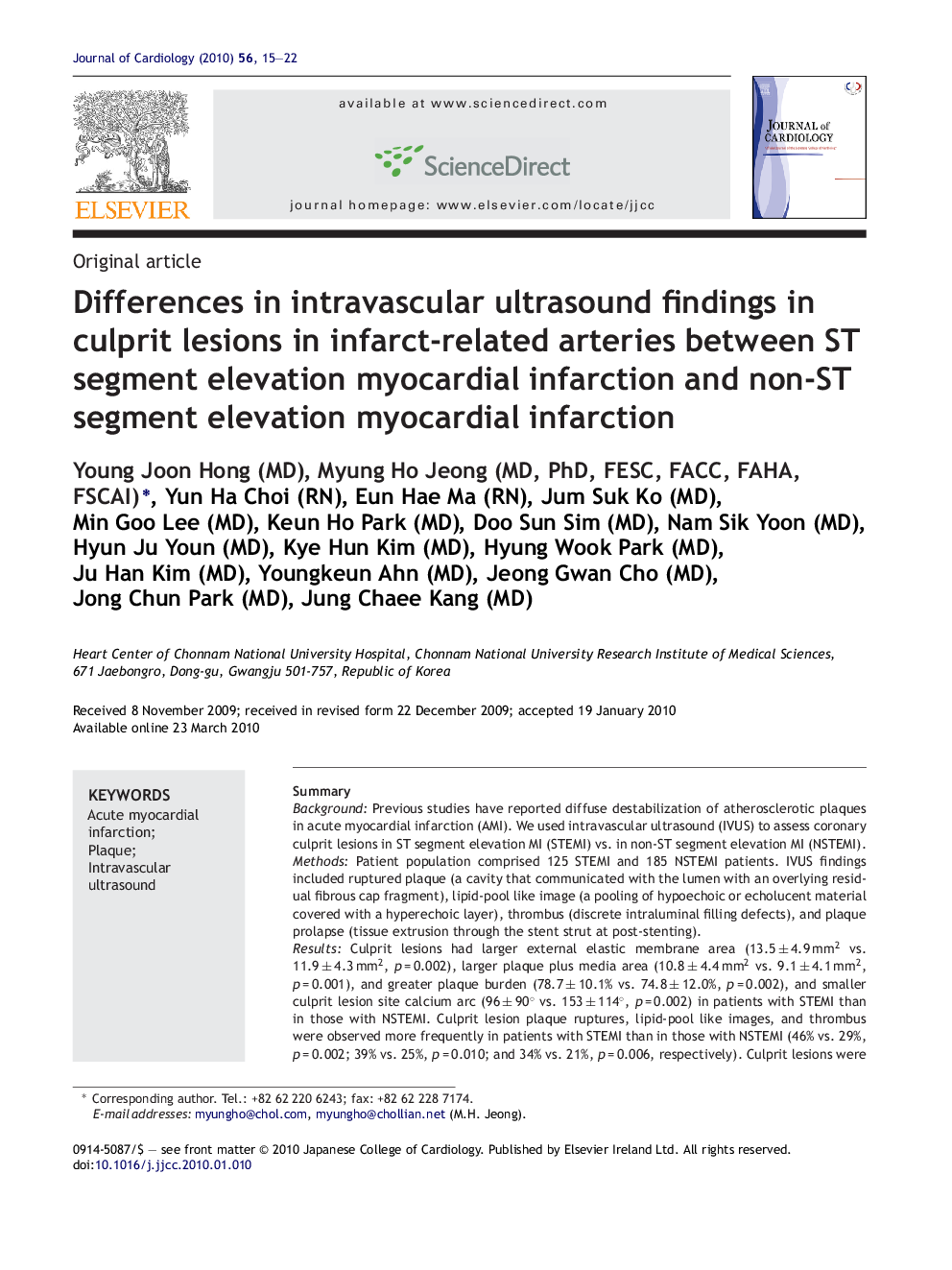| کد مقاله | کد نشریه | سال انتشار | مقاله انگلیسی | نسخه تمام متن |
|---|---|---|---|---|
| 2963610 | 1178568 | 2010 | 8 صفحه PDF | دانلود رایگان |

SummaryBackgroundPrevious studies have reported diffuse destabilization of atherosclerotic plaques in acute myocardial infarction (AMI). We used intravascular ultrasound (IVUS) to assess coronary culprit lesions in ST segment elevation MI (STEMI) vs. in non-ST segment elevation MI (NSTEMI).MethodsPatient population comprised 125 STEMI and 185 NSTEMI patients. IVUS findings included ruptured plaque (a cavity that communicated with the lumen with an overlying residual fibrous cap fragment), lipid-pool like image (a pooling of hypoechoic or echolucent material covered with a hyperechoic layer), thrombus (discrete intraluminal filling defects), and plaque prolapse (tissue extrusion through the stent strut at post-stenting).ResultsCulprit lesions had larger external elastic membrane area (13.5 ± 4.9 mm2 vs. 11.9 ± 4.3 mm2, p = 0.002), larger plaque plus media area (10.8 ± 4.4 mm2 vs. 9.1 ± 4.1 mm2, p = 0.001), and greater plaque burden (78.7 ± 10.1% vs. 74.8 ± 12.0%, p = 0.002), and smaller culprit lesion site calcium arc (96 ± 90° vs. 153 ± 114°, p = 0.002) in patients with STEMI than in those with NSTEMI. Culprit lesion plaque ruptures, lipid-pool like images, and thrombus were observed more frequently in patients with STEMI than in those with NSTEMI (46% vs. 29%, p = 0.002; 39% vs. 25%, p = 0.010; and 34% vs. 21%, p = 0.006, respectively). Culprit lesions were more predominantly hypoechoic in patients with STEMI than in those with NSTEMI (62% vs. 40%, p < 0.001). There was a trend that post-stenting plaque prolapse was observed more frequently in patients with STEMI than in those with NSTEMI (33% vs. 24%, p = 0.081).ConclusionsCulprit lesions in STEMI have more markers of plaque instability (more plaque rupture and thrombus, and larger plaque mass) compared with lesions in NSTEMI.
Journal: Journal of Cardiology - Volume 56, Issue 1, July 2010, Pages 15–22